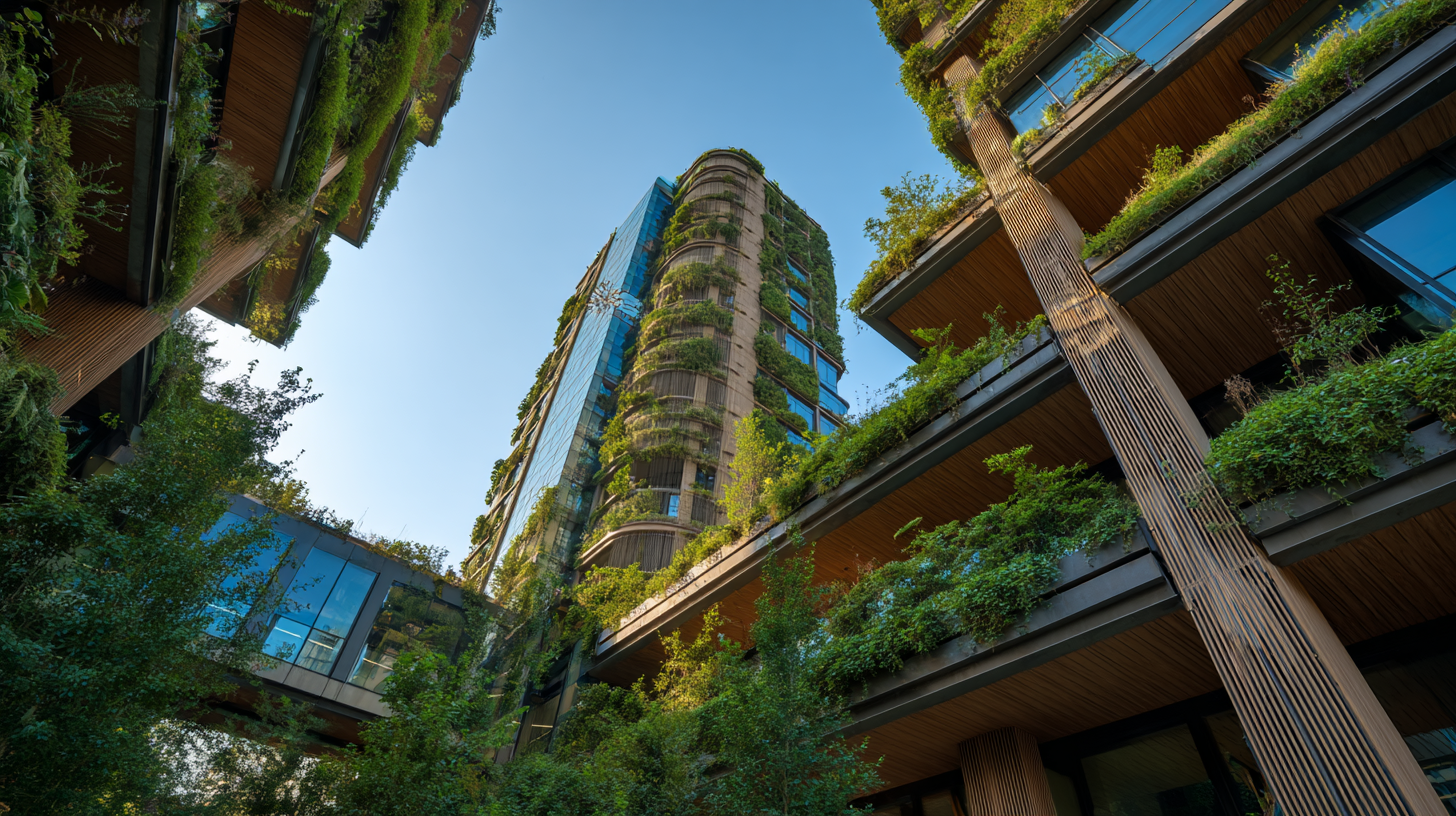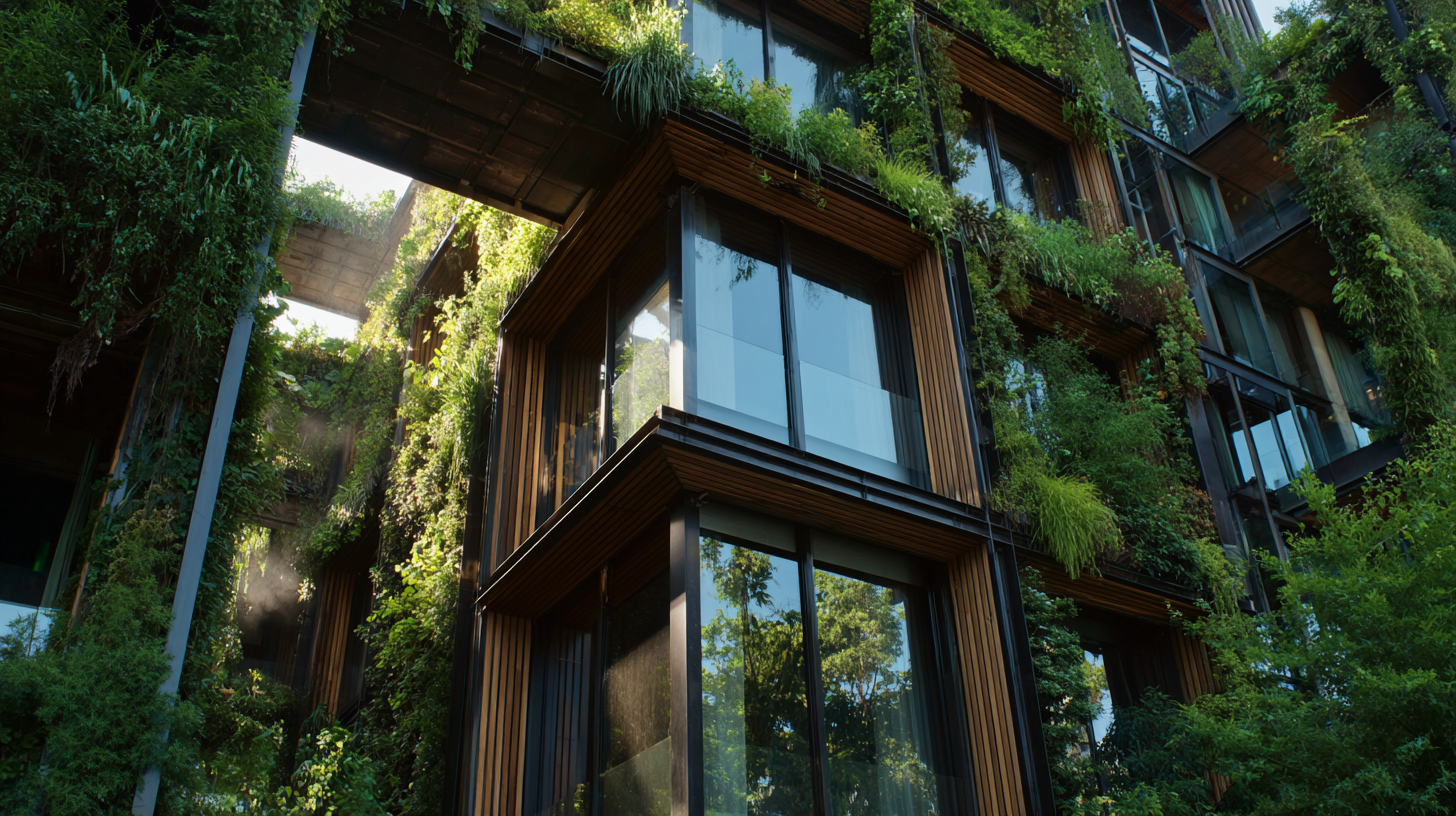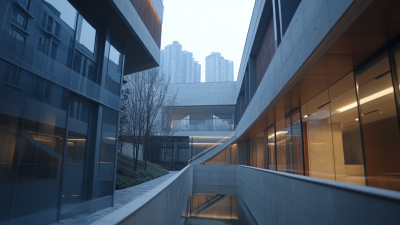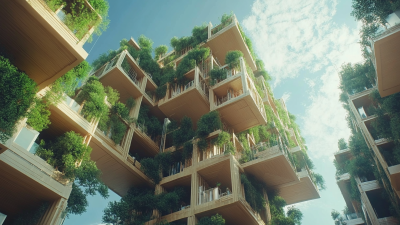Natural beauty for your favorite space
Exploring the Top 10 Most Sustainable Building Materials: How They Reduce Carbon Footprint by 40% in 2023
In the pursuit of a more sustainable future, the construction industry is increasingly turning towards innovative solutions that significantly reduce environmental impact. As we delve into the realm of the "Most Sustainable Building Materials," it becomes evident that the right choices can yield a reduction of carbon footprints by up to 40% in 2023. These materials not only provide functional benefits but also serve as catalysts in the fight against climate change.

From recycled composites to bamboo and rammed earth, each material contributes uniquely to energy efficiency and resource conservation. This exploration aims to illuminate the top ten sustainable building materials currently making waves in the industry, highlighting their benefits and demonstrating how these choices reflect a broader commitment to ecological stewardship.
By understanding and employing these materials, we pave the way for a greener, more resilient future in construction.
Top 10 Sustainable Building Materials Revolutionizing Eco-Friendly Construction
In 2023, the construction industry is undergoing a significant transformation as innovative sustainable building materials take center stage. These eco-friendly alternatives not only minimize environmental impact but also revolutionize construction practices. From bamboo and recycled steel to hempcrete and rammed earth, these materials boast impressive credentials in reducing carbon footprints by up to 40%. As builders and architects embrace these choices, they are contributing to a more sustainable future.
When selecting sustainable materials, it's essential to consider their lifecycle impacts. Opt for products sourced from local suppliers to reduce transportation emissions. Additionally, prioritize materials that are renewable or recycled. This not only lowers resource depletion but also enhances the building's overall sustainability score. For instance, using reclaimed wood not only gives a unique aesthetic but also cuts down on deforestation.
Moreover, integrating these sustainable materials into designs can significantly enhance energy efficiency. For example, incorporating natural insulation materials can help maintain building temperatures, thus reducing energy consumption for heating and cooling. Embracing these strategies not only benefits the environment but can also lead to cost savings for both builders and homeowners in the long run.

Carbon Footprint Reduction: Understanding the 40% Benchmark in Modern Materials
The concept of reducing carbon footprints in construction has gained significant traction, with a 40% reduction benchmark emerging as a pivotal target in the industry. This benchmark is not merely a number; it stems from a comprehensive understanding of the environmental impact of traditional building materials. By employing innovative and sustainable materials—such as bamboo, recycled steel, and rammed earth—constructors can reduce greenhouse gas emissions significantly. These materials are not only eco-friendly but also often lead to lower energy consumption throughout their life cycles, from production to disposal.
Moreover, achieving the 40% reduction goal necessitates a holistic approach that integrates design practices, building technologies, and sustainable sourcing. It emphasizes the importance of life cycle assessments and the need for architects and builders to consider not just the immediate benefits but the long-term environmental implications of their choices. As awareness grows and regulations evolve, the construction industry is moving toward materials that optimally balance functionality and ecological conservation, paving the way for a more sustainable future in architecture and urban development.
Exploring the Top 10 Most Sustainable Building Materials: How They Reduce Carbon Footprint by 40% in 2023
| Material | Carbon Reduction (%) | Renewable Source | Recyclability (%) | Embodied Energy (MJ/kg) |
|---|---|---|---|---|
| Bamboo | 40 | Yes | 100 | 2.5 |
| Hempcrete | 45 | Yes | 90 | 1.2 |
| Recycled Steel | 30 | No | 80 | 25 |
| Rammed Earth | 35 | Yes | 100 | 0.6 |
| Straw Bales | 50 | Yes | 90 | 0.4 |
| Cork | 40 | Yes | 100 | 1.0 |
| Biocomposites | 55 | Yes | 75 | 5.0 |
| Recycled Glass | 20 | No | 100 | 15 |
| Wood (FSC Certified) | 35 | Yes | 85 | 3.5 |
| Bamboo Plywood | 40 | Yes | 100 | 2.0 |
Innovative Techniques: How Sustainable Materials Transform Traditional Construction
Innovative techniques in sustainable construction materials are significantly transforming traditional building practices, offering promising pathways to reduce environmental impact. According to a report by the World Green Building Council, buildings are responsible for approximately 39% of carbon emissions globally, underlining the urgent need for more sustainable solutions. Utilizing innovative materials such as cross-laminated timber (CLT) and recycled concrete not only enhances structural efficiency but also induces a substantial reduction in carbon footprint. For instance, the use of CLT can reduce a building's carbon emissions by up to 20%, as noted in a study by the U.S. Department of Agriculture.
Moreover, emerging technologies such as 3D printing and biocomposite materials are redefining conventional construction methods. A report from McKinsey highlights that integrating biocomposites derived from natural fibers can lower life-cycle emissions by 50% compared to regular concrete. These advancements facilitate the production of lightweight and durable structures while minimizing waste. As the industry shifts towards a more sustainable future, leveraging these innovative materials and techniques will be crucial in achieving the ambitious goal of reducing carbon emissions by 40% by 2023.
Cost-Effectiveness of Sustainable Materials: Balancing Green Choices and Budget
In the quest for sustainable construction, cost-effectiveness remains a critical factor influencing the adoption of green materials. Recent reports indicate that while the initial investment in sustainable building materials can be higher, the long-term savings often justify the expense. For instance, a 2021 report from the Global Sustainable Building Network highlighted that using sustainable materials can lead to a reduction in maintenance costs by up to 30%, illustrating the financial viability of such investments over time.

Moreover, the rise in availability of eco-friendly alternatives has catalyzed competitive pricing within the market. A study from the World Green Building Council revealed that the cost difference between traditional and sustainable materials has narrowed significantly, with some green materials being only 5-10% more expensive than their conventional counterparts in 2022. This shift is largely attributed to advancements in manufacturing technologies and increased demand for environmentally responsible options.
By carefully evaluating these factors, builders and developers can achieve a balance between their green aspirations and budgetary constraints, making sustainable construction more accessible than ever before.
Future-Proofing Buildings: The Role of Sustainability in Long-Term Resilience
In the face of climate change and environmental degradation, sustainability has emerged as a crucial factor in the architectural landscape, ensuring long-term resilience for buildings. According to the World Green Building Council, sustainable buildings can reduce energy consumption by up to 60% and carbon emissions by nearly 40% compared to traditional structures. This significant drop in carbon footprint is primarily achieved through the use of sustainable building materials that not only minimize resource depletion but also enhance the durability of the structures.
Materials such as bamboo, recycled steel, and rammed earth are being championed for their eco-friendly properties. For instance, bamboo grows rapidly and absorbs more carbon dioxide than traditional timber, making it a highly sustainable option for construction. The United Nations Environment Programme emphasizes that integrating such materials into building design not only supports environmental goals but also leads to cost savings over time through reduced maintenance and energy usage. Furthermore, the adoption of these materials fosters a healthier indoor environment, which aligns with the holistic approach towards resilience by supporting the well-being of occupants in these future-proofed buildings.
Related Posts
-

Revolutionizing Construction with Sustainable Materials Amidst Rising Tariffs on Chinese Products
-

Envisioning Tomorrow: Innovative Perspectives on Sustainable Building Materials in Architecture
-

Exploring the Future of Sustainable Building Products for Global Procurement Success
-

Exploring the Surge in Global Demand for Most Environmentally Friendly Building Materials at the 137th Canton Fair
-

Unlocking the Advantages of Sustainable Building Materials for Modern Homes
-

Trending Sustainable Building Materials for Homes in 2025 A Comprehensive Comparison Guide
